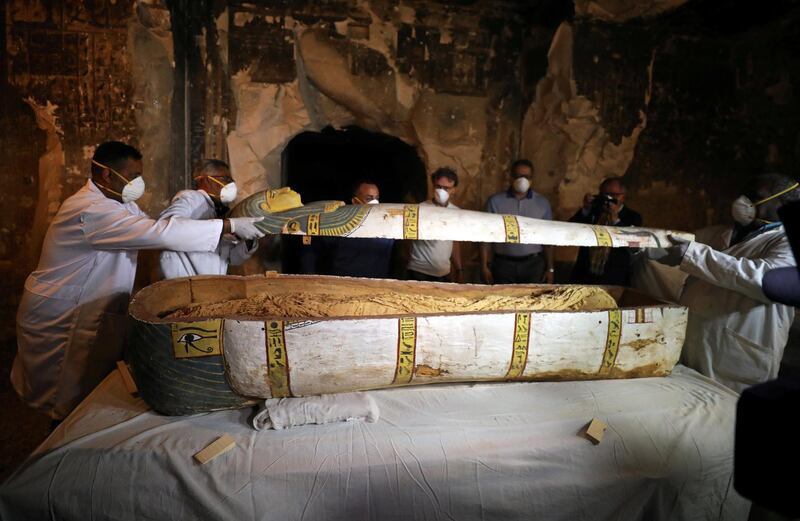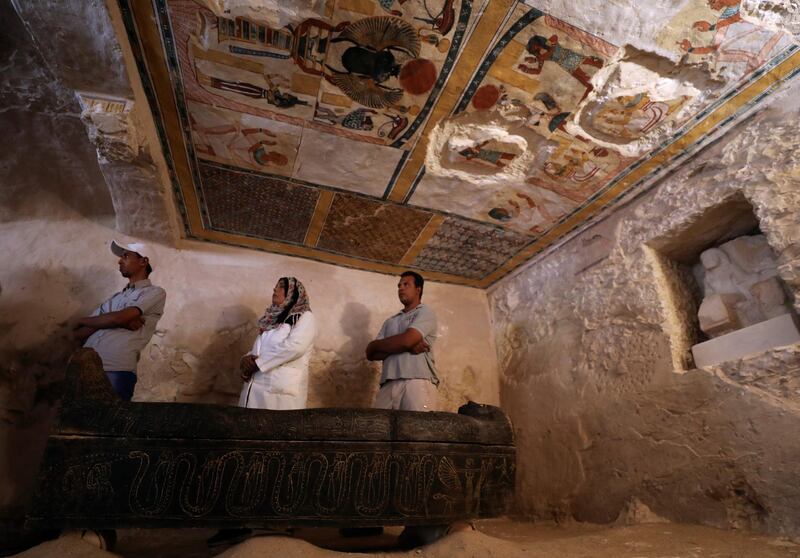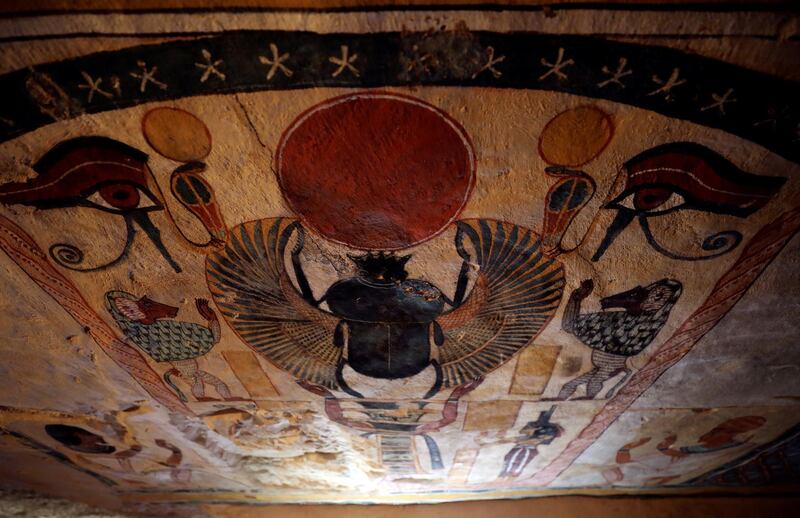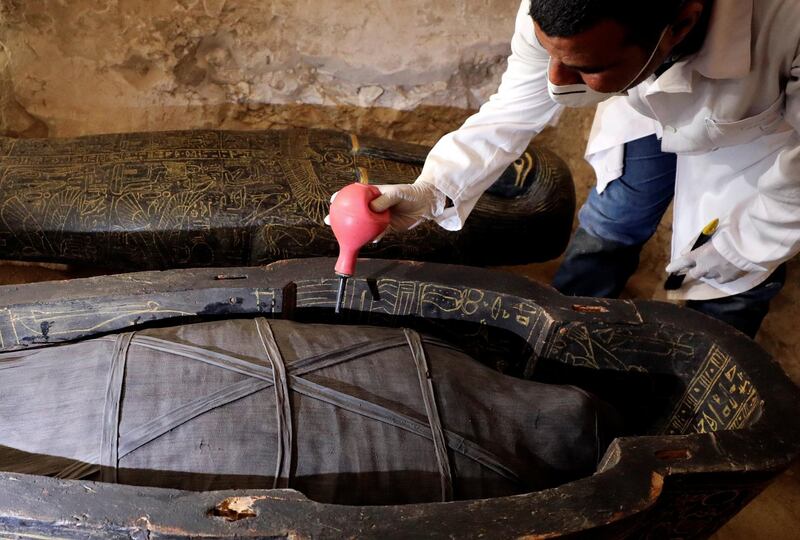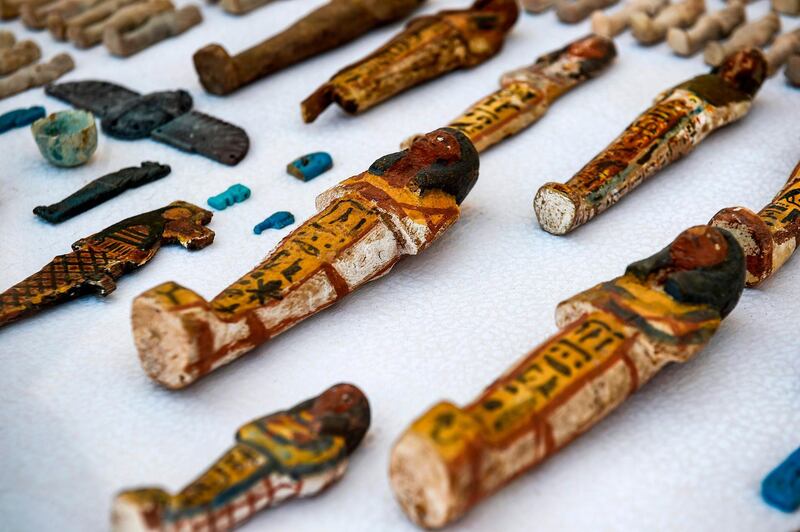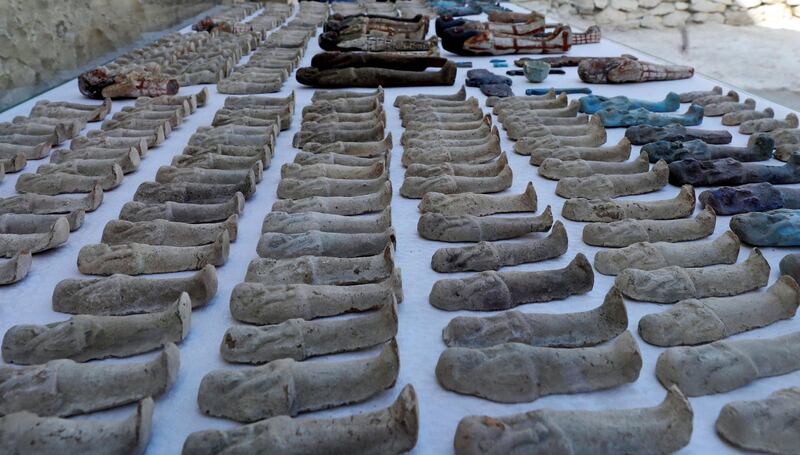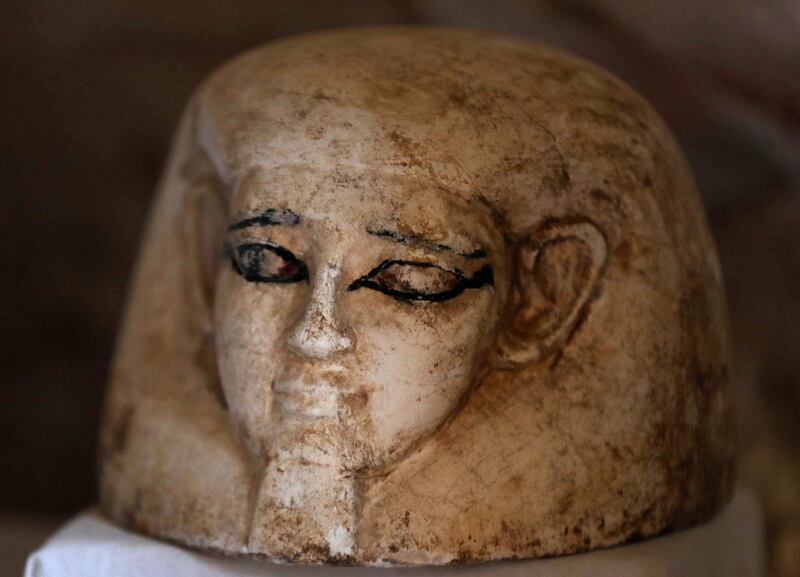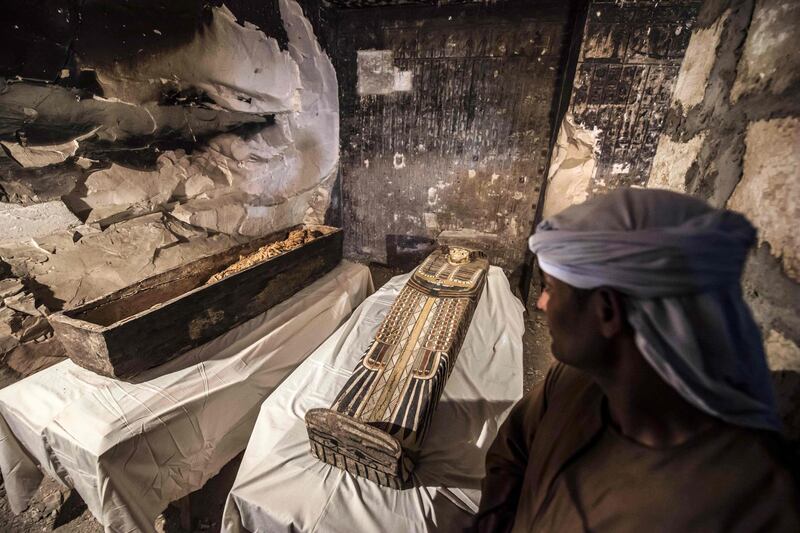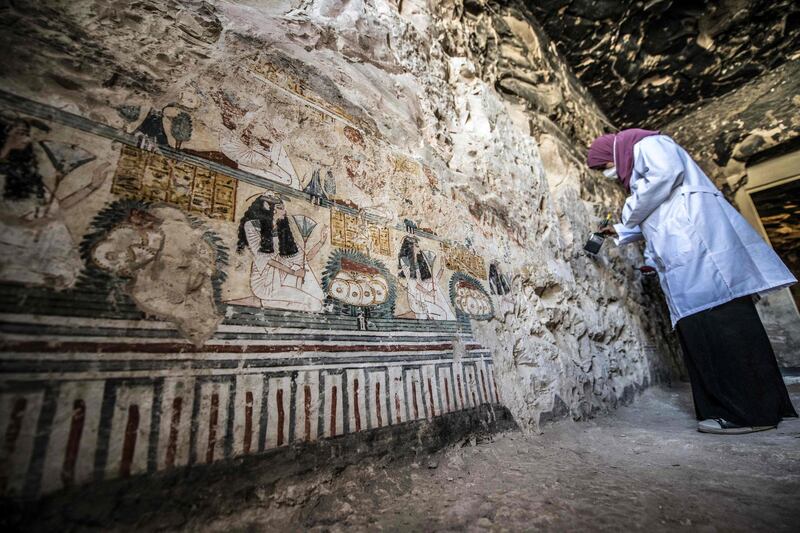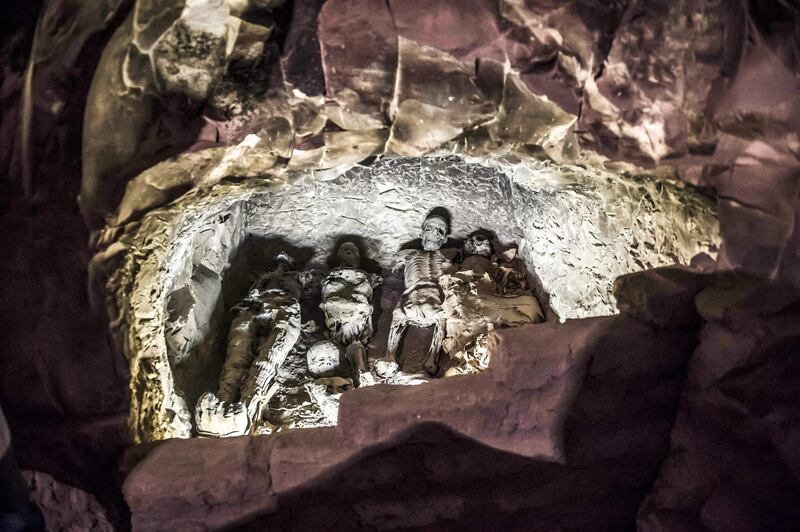Egyptian authorities have announced the discovery of another archaeological marvel, this time a Pharaonic tomb dating back to the 13th century B.C., marking the latest of a series of finds that the government hopes to use to stoke interest in the country’s wealth of antiquities and attract more tourists.
While the recent spate of discoveries pale in comparison to the scale of digs in the last century, they have been interesting enough to earn a place for Egypt in the international media outside the usually grim fare of terror attacks or economic woes.
The ancient burial place contains two decorative sarcophagi, or coffins, along with some 1,000 funerary statuettes and other objects like coloured wooden masks and papyrus on which parts of the ancient Egyptian “Book of the Dead” were inscribed. The discovery of the tomb was announced in a ceremony in front of the temple of Queen Hatshepsu over the weekend in the southern Egyptian city of Luxor by Antiquities Minister Khaled el Anani.
The two coffins contained mummies in a perfect condition, according to the minister.
"One sarcophagus was rishi-style, which dates back to the 17th dynasty, while the other sarcophagus was from the 18th dynasty," he said. "The two tombs were present with their mummies inside."
The Eighteenth Dynasty dates back to the 13th century B.C., a period noted for some of the most well-known Pharaohs, including Tutankhamen and Ramses II.
The tomb, located on the west bank of the Nile near the famed Valley of the Kings, was discovered by an Egyptian archaeological team that worked on the site since March, removing some 300 square meters of rubble to find it. Some of the tomb’s wall paintings depicting the tomb’s owner and his family were in “exceptionally” well-preserved condition, said the minister.
______________
Read more:
ISIS counter-attacks kill 47 US-backed fighters in east Syria
Cairo metro suicide warnings shed light on Egypt's mental health apathy
Egypt calls on Israel to end military action in Gaza
______________
Earlier in the day, authorities also revealed in the same area the tomb of the overseer of the mummification shrine identified as Thaw-Irkhet-if.
As has been customary in the past to ensure maximum media coverage, a large segment of the foreign and local press corps was invited to cover the unveiling of the tomb in Luxor and the minister and his top aides made themselves available for seemingly endless interviews.
This tactic, spearheaded by the minister, has been consistently employed in recent years as the government tries to revive the country’s vital tourism industry, which has been battered by years of upheaval following a 2011 uprising that toppled Hosni Mubarak’s 29-year rule.
It seems to have worked, at least partially.
The industry is showing signs of steady growth, with Egyptians in Cairo and elsewhere in the country now familiarising themselves again with the welcome sight of foreign tourists on the pristine Red Sea beaches, Cairo’s landmark Egyptian museum and the mediaeval bazaar, the Giza Pyramids as well as in Luxor, home to some of the world’s best preserved ancient temples and tombs, including that of boy King Tutankhamen.
Egypt has revealed over a dozen ancient discoveries since the beginning of this year.
Earlier this month, Egypt sparked wide media interest in its Pharaonic heritage when it announced the discovery of dozens of cat mummies and a rare collection of mummified scarab beetles, all kept in coffins that date back about 6,000 years. The discovery was made in the Saqqara area near the Giza Pyramids.
Ancient Egyptians mummified humans to preserve their bodies for the afterlife, while animal mummies were used as religious offerings.
